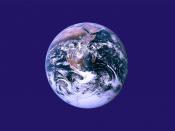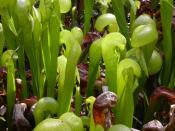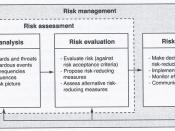Succession is a long-standing alteration in the makeup of populations. Not like the feats of natural disasters and seasons, succession is brought on by the actions of existing organisms who occupy the surroundings. Over many episodes of eras, the environment is tailored by these inhabitants so it becomes suitable for colonization by another species and less suitable for those already there. These original species can not compete with the new species, who are better equipped to exploit the improved conditions, so the initial organisms are ultimately defeated and disappear.
Primary succession begins on a bare surface such as a rock face, a volcanic island, or land freshly exposed after a glacier scrapes it clean (Berg & Raven, 2004, figure 5.4, p. 87). For primary succession to take place, all surfaces must be completely devoid of life. The only type of life that can inhabit these areas are hardy pioneer species, such as lichens or algae, which are autotrophic and provide a base for food chains and food webs.
These plants are resilient to the harsh conditions encountered in this type of barren area. A lack of shelter from the wind, temperature fluctuations, and a lack of water are the types of conditions these organisms must be capable of enduring. Small insects such as ants, spring-tails, and mites reside in cracks in the rocks among these lichens.
Ecosystems experience secondary succession after a non-natural or natural disturbance, such as abandoned farmland and forest fires (Berg & Raven, 2004, figure 5.5, p. 88). The soil or substrate present at this location contains an active seed bank. For instance, a flood can be a source of remarkable devastation to an ecosystem. It also provides to release many accessible niches by hauling away certain organisms. Following a flood, fresh species converge from close by...


